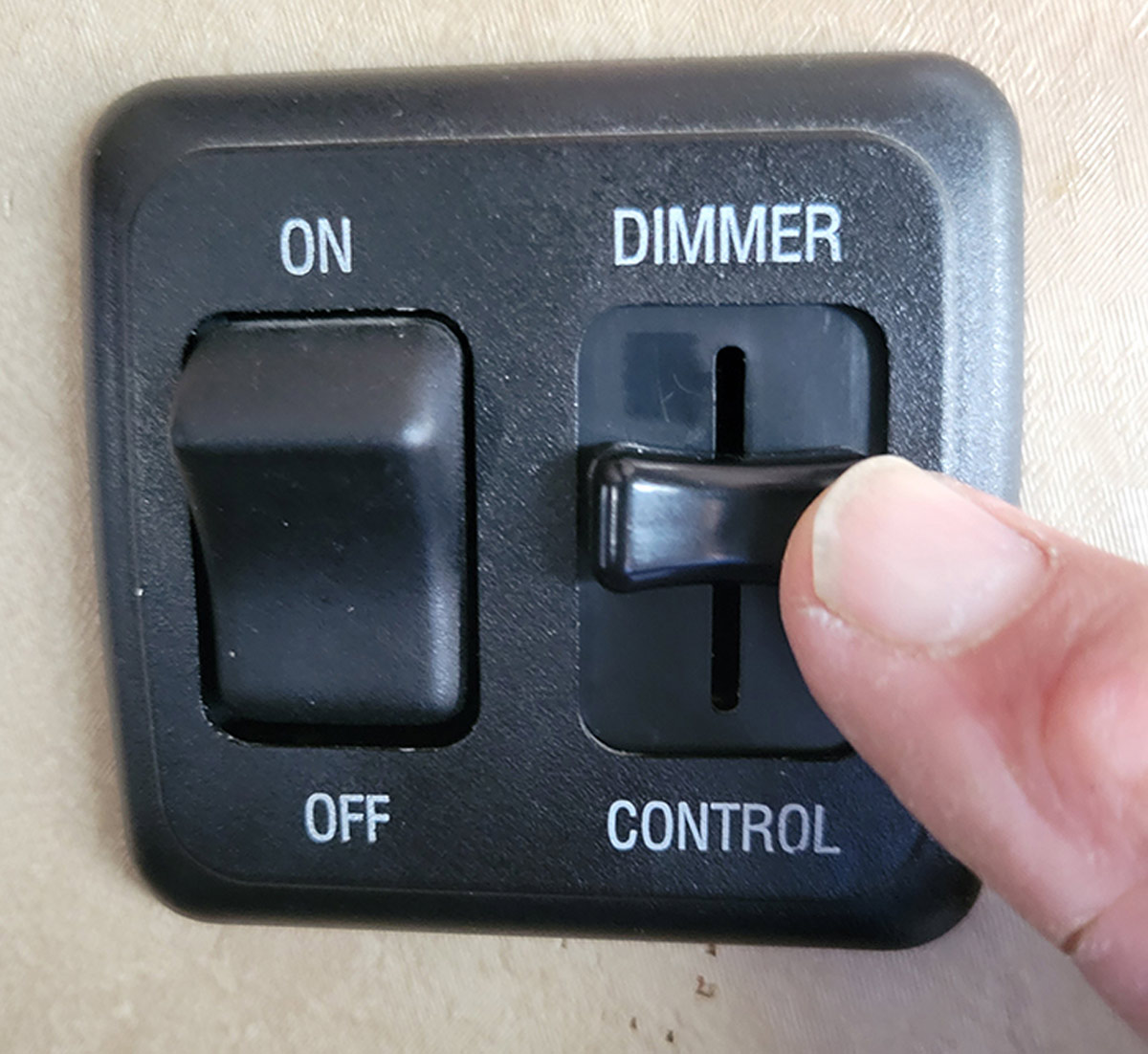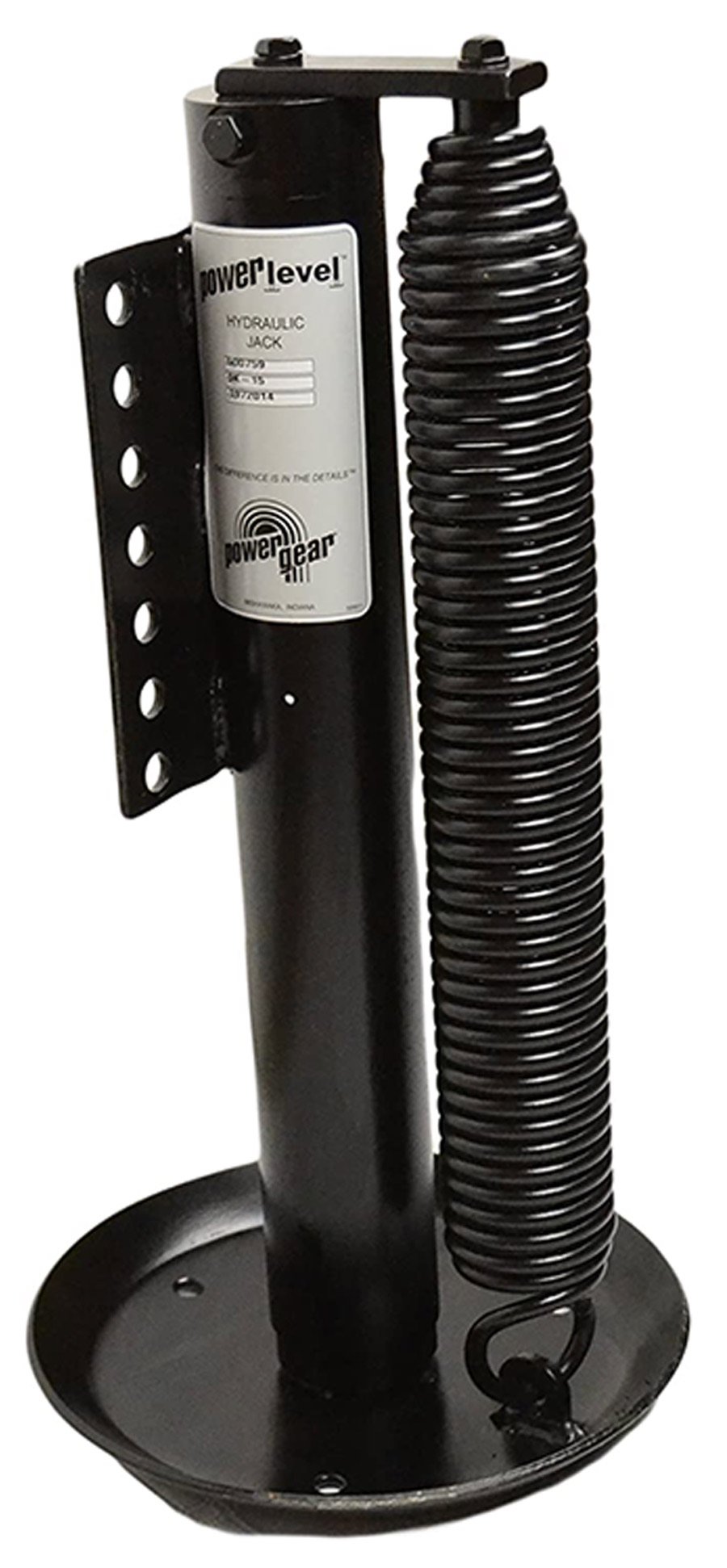Make it Dimmer

— Alan Gruend
Alan, you are not alone with this issue. The latest trend is to have multiple efficient, bright LED lights — and since they draw a small amount of current, it’s easy to string an entire bank of lights on the same small-gauge wire without causing an electrical overload. A great way to alleviate your problem is to install a dimmer switch, which is readily available on the Internet and is very easy to install. The dimmer switch will require a ground wire, which makes it difficult to replace the factory On/Off switch that’s built into the wall; there’s probably not a ground wire anywhere near that switch. The solution is to install a dimmer switch next to the first fixture in the string of lights and utilize the ground that runs to that light as well as the power-supply wire from the original wall switch.
Most dimmer switches only have three wires, making it very simple to install; all you need to do is mark a location close to the first light, cut the corresponding hole that will allow the switch to be installed and you’re in business. We did, in fact, add dimmer switches to an RV recently and covered the process in our weekly newsletter, RVExpert — it’s free. You can check out the dimmer-switch installation — and subscribe to the newsletter — here: rventhusiast.com/rvexpert/.
—John Boellin
John, a great question that’s been controversial ever since gas refrigerators came on the RV scene — which was a very long time ago. It looks like the trend is moving toward residential style and 12-volt DC refrigerators, which would of course make this issue moot. As you might image, the safest answer to your question is to shut the LP-gas valve(s) and the refrigerator off during travel. But, you should consider the risk factor, which is low when following proper safety protocol.
One thing to keep in mind — and I believe that most people forget this — is that when you pull off the road to get fuel you’ve got an open flame, which must be extinguished before entering fuel stations. Even though the refrigerator — and for that matter, the furnace — may be quite a distance from the pumps, you still have an open flame that could ignite vapors if the air/fuel mixture is just right. Gasoline vapors can travel far more than 20 feet.
Theoretically, you could turn the refrigerator off before you pulled into the gas station — but the only problem with that is having to stop in the middle of the road to get it done if you’re pulling a trailer, which might cause a traffic jam and/or incite impatient drivers. You can travel with the refrigerator turned off while on the road, but you’ll have to be sure that the food and the temperature inside of the refrigerator compartment is very cold; safe temperatures should be okay for three or four hours, maybe more depending on ambient temperature. You could even stop for lunch and turn the refrigerator back on for an hour or so to bring the temperature down before resuming travel.
It’s also possible to run the refrigerator on electric if you have an inverter and a good charging source (like a solar system or heavy-gauge wiring to handle the amperage supplied by the engine alternator). In many cases, the connection between the trailer umbilical cord and receptacle on the tow vehicle can become an issue because of a bad connection. So, if you plan on running off the inverter, get out your multimeter and confirm that you have the charging amps to keep the batteries conditioned while on the road and using the inverter to power the electric heating element in the refrigerator, which is a power hog.Most fire department personnel will suggest turning the LP-gas off while on the road, but following the right safety procedures mitigates the risk substantially.

— Robert Clevelend
Robert, I can’t even imagine having to drive for hours listening to that alarm. Power Gear is now owned by Lippert and it should have replacement jacks for your system; visit the company’s online store at store.lci1.com. We took a quick look and after entering “Power Gear” in the search engine, a number of replacement parts made themselves known.
Another option is to have a company that specializes in hydraulic repairs rebuild your jacks. There are hydraulic repair services in just about every town; their main business is typically rebuilding hydraulic rams for tractors and other equipment, but they should have the capability of repairing any type of a hydraulic ram. The technician just needs to pull the jacks apart to determine which seals and O-rings need replacing. This would be a viable option in case there is no replacement for your older system. For example, there’s a place close to me in Oxnard, California, that can do this type of work. The name of the company is J.R. Hydraulics and if nothing else, you could ship your jacks to have them rebuilt and sent back to you. My guess is that if two of the rear jacks have failed it won’t be much longer before the front units start to leak as well.

— Ern Johnson
Ern, it’s nice that you’re looking ahead instead of waiting until the last minute. Here is a suggestion that will likely alleviate your issue: I recommend a product called Micro-Air. This is a module that can be added to your air-conditioner allowing it to start and run on much less current — even your portable Honda generator. At the very least you should be able to alleviate problems when hooked up to lower power.
The problem arises from the amount of current needed to start the air-conditioners as the compressor and the fan try to kick on at the same time — drawing a huge amount of amperage for a very short period of time. The surge literally lasts for only 1/6 of a second, but is enough to cause a generator to stall out. The Micro-Air EasyStart (microair.net) reduces the necessary amperage to start the compressor, making it possible to run on portable power, which really comes in handy when boondocking in an RV without an onboard generator. I have talked to several RVers who are quite pleased with this product. Figure on spending around $300 for the device.

Another company with a similar product is Netaork RV, which offers its SoftStartRV (softstartrv.com). The SoftStartRV electronically ramps up the compressor over a longer period of time (about 1/3 of a second), substantially reducing the current required. RV Enthusiast contributor Mike Sokol tested the SoftStart RV on a Dometic Penguin 15,000-Btu air-conditioner (https://www.youtube.com/watch?v=iJqijovoMW0&t=3s) and, with his recording equipment, was able to visually demonstrate how the technology works. In his example, the air-conditioner spiked at 58 amps stock — and just 24 amps after the SoftStartRV was installed. That’s 6,960 watts without, and 2,880 watts with the SoftStartRV.
Whichever option you elect to go with, I suggest you have it installed by a qualified technician as the electrical connections can be complicated for those who are not experienced with wiring and electricity. A visit to either company’s website or Amazon will provide all of the information that you need to order this product. Enjoy your vacation this summer — air-conditioning is definitely a must-have during the hot summer months.

